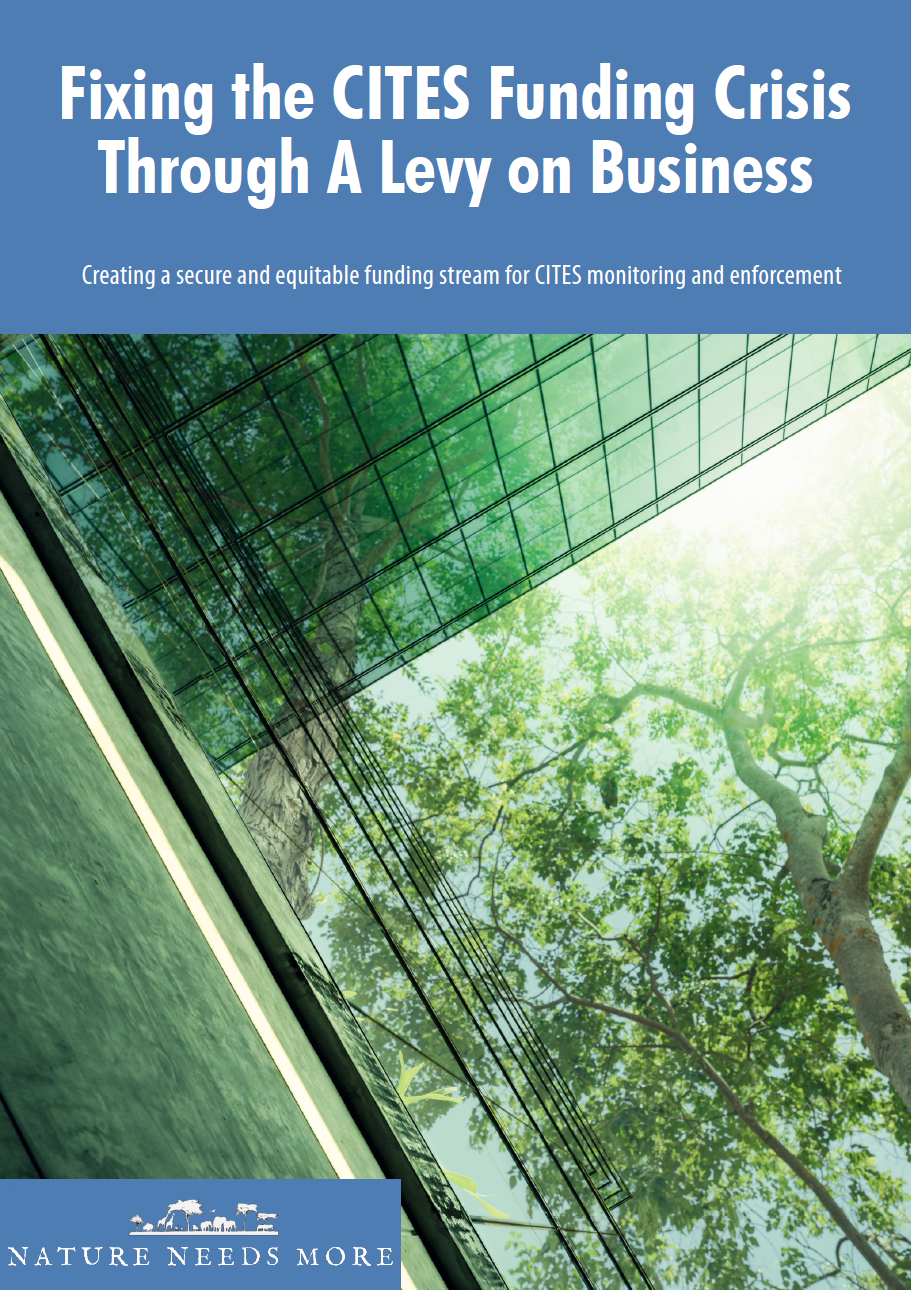
The convention cannot deliver anything for wild species until the funding crisis is solved. For decades the CITES has been an ineffective regulator due to its impoverished state.
Submissions to CITES CoP 20 detail that the contributions due to the CITES for 2025 are US$6.6 million, but to-date only $3.3 million have been received. That’s means another US$3.3 million are outstanding plus an additional $1.4 million in unpaid contributions from prior years.
What makes this both tragic and ridiculous is that that the CITES trade is primarily for the luxury markets, with fashion and furniture being the biggest users of wild species after seafood.
In 2016, a European Parliament Report acknowledged that “The wildlife trade is one of the most lucrative trades in the world. The LEGAL trade into the EU alone is worth EUR 100 billion annually”.
Research published in 2021 clarified who really benefits from the trade that is driving the extinction crisis. The biggest profiteers from the trade in wild species are some of the richest countries in the world. Europe combined comes in first place for profiteering. Joint second place is North America and China/Hong Kong combined. Third place is Japan, joint fourth place India and Saudi Arabia.
Huge profits are being made by some of the wealthiest countries and most well-known luxury brands and conglomerates, yet the CITES regulator can barely scrap together $3.3 million to monitor and regulate this global trade.
And now, in 2025, the scale of the CITES funding crisis has reached a whole new level with the loss of US government funding, resulting in the possibility of a 22% drop of the core budget of the Secretariat. Corporate conservation organisations can no longer be complicit in letting this crisis to fly under the radar, in the same way that they have done for decades.
The urgency of finding a solution to the deepening CITES funding crisis cannot be overstated. In addition to core funding for the Secretariat, the CITES ongoing existence depends on creating a secure and equitable funding stream for monitoring and enforcement. A substantial increase in funding for CITES can only be achieved by the businesses profiting from this trade covering the cost of regulation.
The trade in wild species is a perfect storm in terms of business greed, 1) They have ruthlessly taken advantage of imperfections, weaknesses and vulnerabilities within the regulator,
2) They don’t contribute to the cost of regulation, and,
3) When it is suggested they pay a levy of say 1% of the value of trade to cover the cost of regulation they suggest this is a slippery slope that “stifles” easy access to raw materials.
Yet, this is common practice in many industries, for example pharmaceutical companies have to cover the costs of drug trials and regulatory approval. In 2023, the total budget of the European Medicines Agency was €458 million. Around 89.0% of the Agency’s budget derives from fees and charges levied on the pharmaceutical industry, 10.9% from the European Union contribution for public-health issues and 0.1% from other sources. This example shows that substantial funds can be raised from industry if the model is set up correctly.
Let’s be clear here, pharmaceutical companies, including Novartis, Pfizer, AstraZeneca, Janssen, Roche, and GlaxoSmithKline, pay the cost of the European Medicines Agency – Europe’s pharmaceuticals industry regulator.
Why shouldn’t the likes of LVMH, Kering Group, Prada, Capri Holdings, Tapestry Inc, Ralph Lauren, Armani Group, Hermes, cover the cost of regulating the global trade in the CITES listed species they use as their raw materials?
The species listed under the CITES are some of the most endangered species in the world and are the most commercially valuable.
The CITES leadership have acknowledged that, “The current situation [in the CITES] has brought us to a critical point”, continuing, “we may have expanded beyond capacity [to deliver] the official mandate of the convention, which is to regulate trade in species and focus on topics for which no other appropriate competent bodies exist”.

This is tragic because of what is stated, “that the CITES [focuses] on topics for which no other appropriate competent bodies exist”, which is true. It isn’t only international organisations, like the WTO or the CBD, who can’t do what the CITES can, neither can private entities.
In this context, focusing on proposals for amendment of the Appendices is akin to shuffling deckchairs on the Titanic.
In 2021, Nature Needs More published Modernising CITES – A Blueprint for Better Trade Regulation, which outlines a new regulatory framework for CITES based on whitelisting (also known as positive or reverse listing). This new model would regulate business directly and businesses would be paying the full cost of regulation. The model we presented makes business responsible for internalising compliance yet keeps companies at arm’s length from the regulator and the regulatory process.
The report also outlines a detailed account of how this model would work in practice, under real life conditions. Critically, we show that it is financially viable, providing US$9-13.5 BILLION annually to regulate, manage, monitor and enforce the trade.
While this would take a strategic review of the convention, which shouldn’t be a big ask because it has only had one review in its 50-year history, the financial crisis within the CITES couldn’t wait for such a review.
Which is why in 2024 we published the report, Fixing The CITES Funding Crisis Through A Levy On Business, outlining the immediate solution is to collect a 1% levy on commercial imports to the main import markets (at a minimum the US, EU, China/HK, Japan, the UK and countries of the Middle East). This can be done without any need to amend the articles of the convention.
If the businesses and industries making mindboggling profits will not commit to this then they must ultimately accept that this trade in non-essential goods, driving the loss of some of the world’s rarest species must end.
With CITES CoP20 only a month away, will those who, for whatever reason, have shown a deep discomfort in exposing the weaknesses of the current system to step up to the Reality Check of CITES@50. If not, then there is no way to prove the trade in wild species is either legal or sustainable and, as such, it should be banned.


